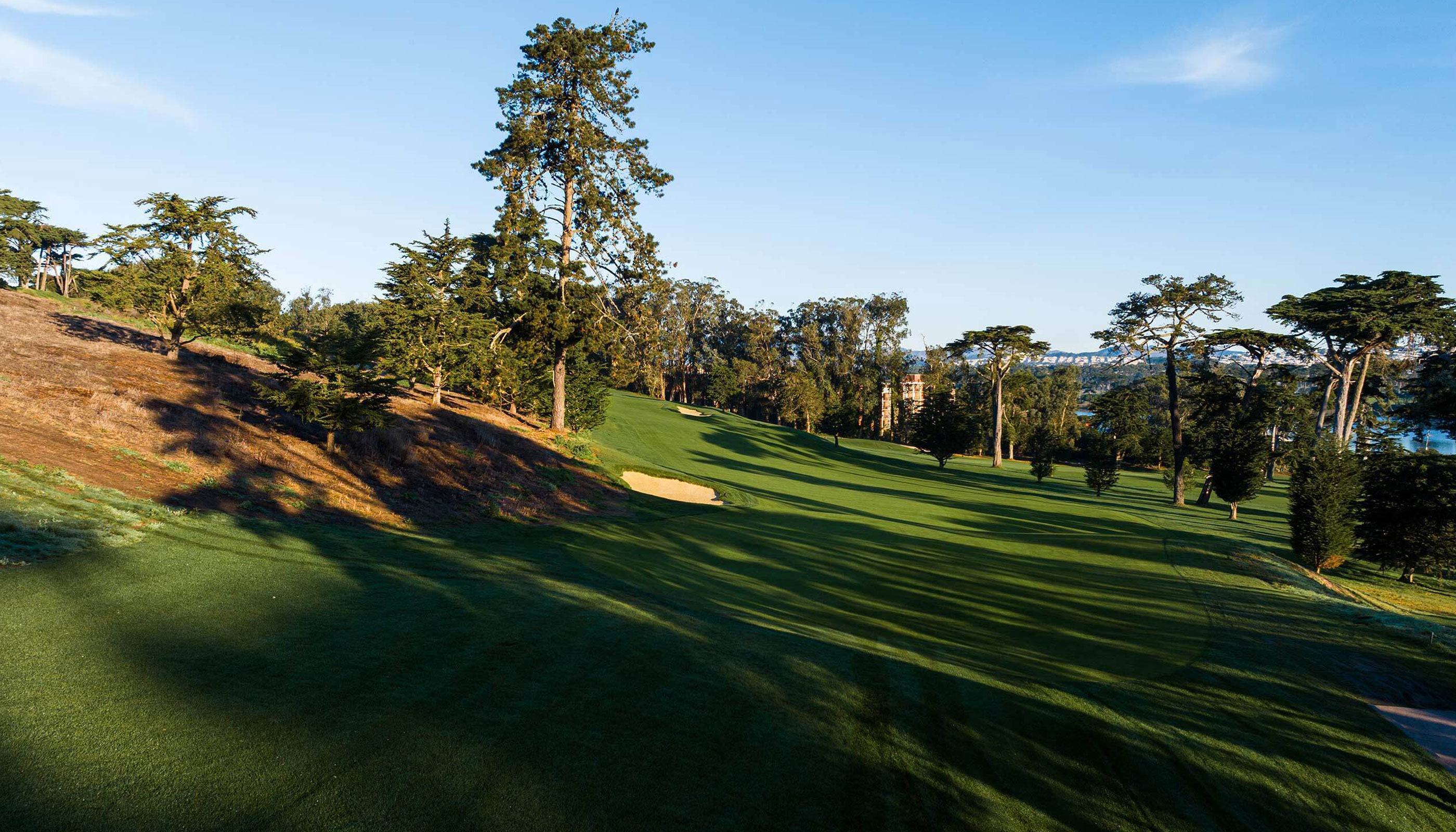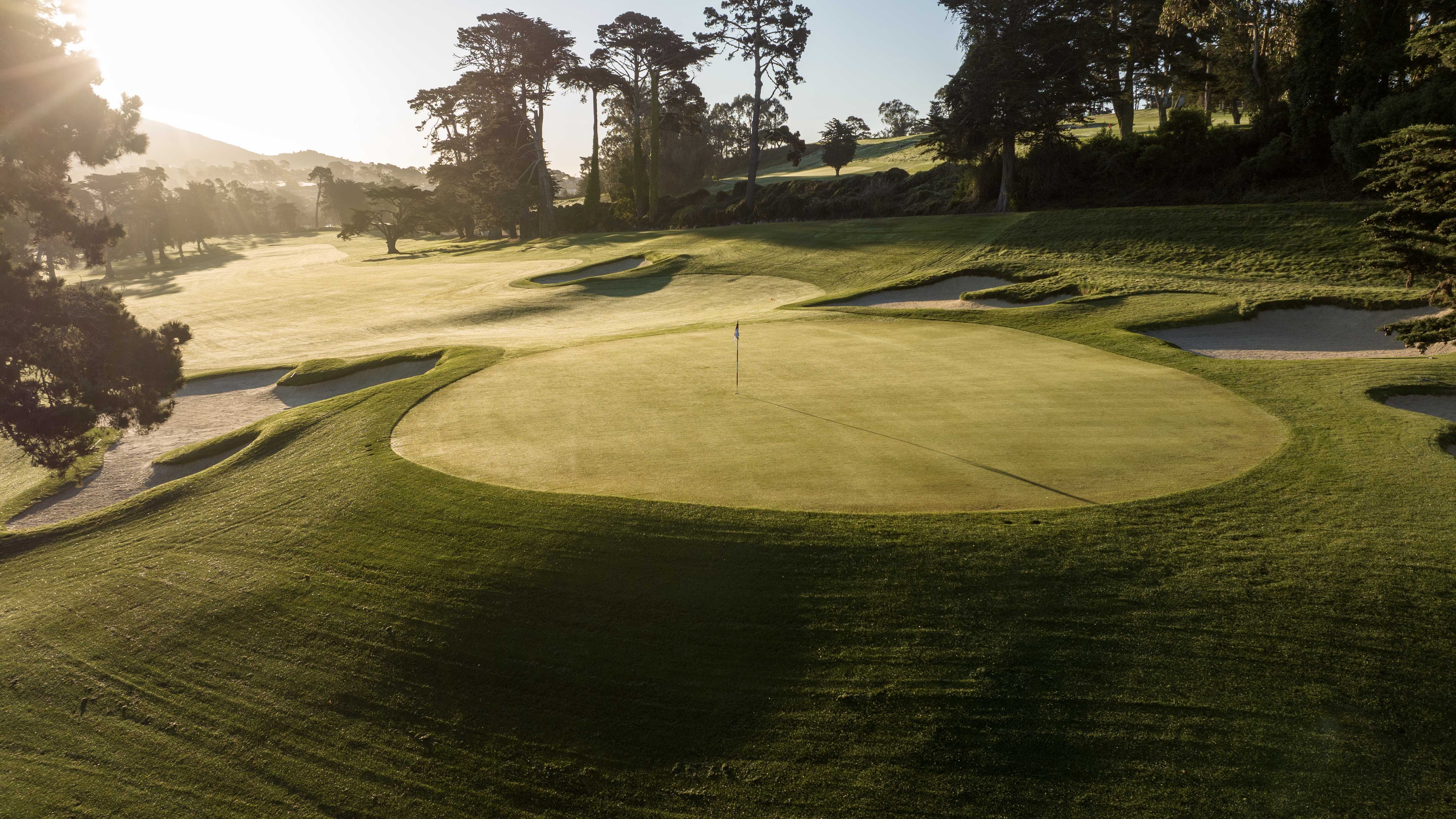Reverse Camber in Golf Course Design
The difficult and effective feature can wreck your round if you don’t drive thoughtfully


The term “camber” often refers to tilted motorways, particularly ones that slope from outside to inside on a turn or curve to help keep cars on the road. “Reverse camber” in golf course design does the exact opposite, with slopes funneling balls farther and farther away from the ideal line. In short, a reverse-camber hole bends in a direction opposed to how the land is moving. If the terrain slopes down to the left, a reverse-camber hole will dogleg to the right.
What makes the reverse camber such a difficult feature is that it rejects attempts to gain a strategic advantage by attacking the short route to the green. You may try to play up the inside of the dogleg to shorten the approach to the green, but the slope will continually push your ball toward the outside. Even if the ball does not roll very far down the camber on the tee shot, shots from the fairway are also affected. Whether the ball is above or below your feet, it will tend to curve in the direction of the slope, away from the green. This is what makes reverse-camber holes so effective: they never allow you to relax and require calculated shotmaking with each swing.
One of the most famous and severe examples of a reverse-camber hole is No. 4 at the Olympic Club’s Lake Course. This 430-yard par 4 plays downhill from the tee to a fairway that tilts to the right. From the approach zone, the fairway turns sharply left, climbing back up the hill to a semi-blind green. The slope and bend of the fairway are so pronounced that moving the ball right to left off the tee, against the camber and with the dogleg, is a near-necessity. In other words, right-handed players must hit a draw around the trees—not the preferred shot for most of today’s high-level golfers. This extreme reverse camber, combined with two bunkers 40 yards short of the green that obscure the putting surface, makes the fourth one of the hardest holes on the Lake Course.
{{reverse-camber-olympic-fourth-hole-gallery}}
Many other holes on the Lake Course feature similarly canted fairways as the property consists almost entirely of one massive hillside spilling into Lake Merced. In particular, the par-5 17th hole also uses a reverse-camber concept, playing uphill and bending slightly to the left on a slope falling to the right.

But even holes that don’t dogleg can have reverse-camber characteristics. Say, for example, you have a fairway that slopes to the left, encouraging an approach shot to curve right to left, and a green that is oriented to be most accessible to a shot moving left to right (a right-handed fade). These are the core characteristics of a reverse-camber hole. The land works against how the player wants the ball to move. Several holes at Pebble Beach Golf Links, including the seaside ninth and 10th, function in this way, with the beach on the low side of the camber enhancing the challenge.
{{reverse-camber-pebble-beach-gallery}}
If a road were built with reverse camber, it would likely result in a lot of accidents for careless drivers. Likewise, a reverse-camber golf hole can easily wreck your round if you don’t drive thoughtfully. So mind the slope.
Leave a comment or start a discussion
Engage in our content with thousands of other Fried Egg Golf Club Members
Engage in our content with thousands of other Fried Egg Golf Members
Get full access to exclusive benefits from Fried Egg Golf
- Member-only content
- Community discussions forums
- Member-only experiences and early access to events












Leave a comment or start a discussion
Lorem ipsum dolor sit amet, consectetur adipiscing elit. Suspendisse varius enim in eros elementum tristique. Duis cursus, mi quis viverra ornare, eros dolor interdum nulla, ut commodo diam libero vitae erat. Aenean faucibus nibh et justo cursus id rutrum lorem imperdiet. Nunc ut sem vitae risus tristique posuere. uis cursus, mi quis viverra ornare, eros dolor interdum nulla, ut commodo diam libero vitae erat. Aenean faucibus nibh et justo cursus id rutrum lorem imperdiet. Nunc ut sem vitae risus tristique posuere.